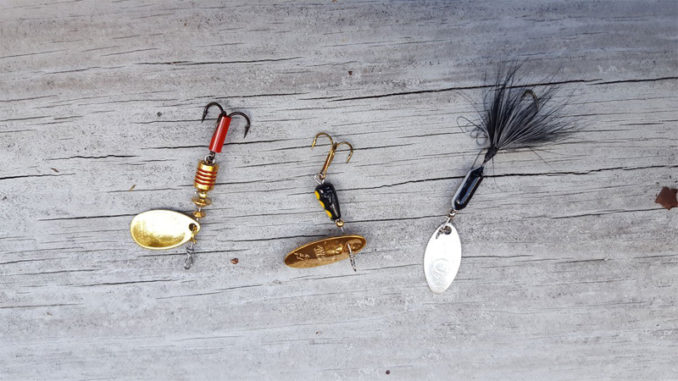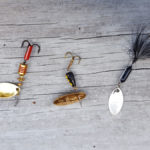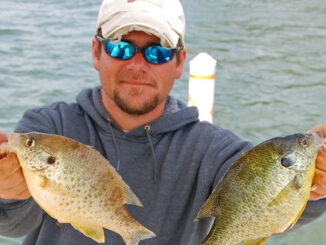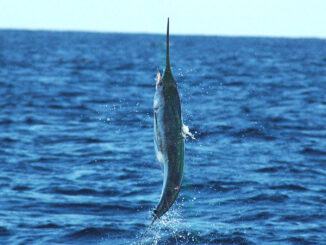
Take a spinning outfit and a few lures with flashing blades to the stream and you’re set to go
Die-hard fly fishers, some of them, are scornful of bait fishers, portraying them as low-brow fish killers who consume every trout they catch. Bait fishers, some of them, are equally scornful of fly fishers, considering them elitists who catch fish not to eat but to release.
Between those two extremes, of course, are thoughtful fly fishers who occasionally kill a fish to eat and bait fishers who catch only enough to eat. And on each side, you will find trout fishers who consider their way of fishing as the only true way of fishing for trout.
The trout fishers who hold a special niche without attracting scorn from either side are the spinner fishers. The big advantage of spinner fishing over fly fishing is the cost. Getting outfitted for fly fishing requires a sizeable outlay of money: rods, reels, line, leaders and all the different flies, nymphs and streamers you have to buy. The end result could be hundreds of dollars, more if you buy the expensive models. Depending on where you purchase it, you can get a complete spinning outfit, including rod, reel and line for under a hundred dollars and have enough money left to buy an assortment of spinning lures.
As for the advantages over bait-fishing: no mess, no fuss. You don’t have to constantly bait your hook, and you’ll avoid the irritating hang-ups when your hook and sinker are caught on rocks, debris, and other underwater hazards. Yes, you will occasionally lose a lure, but if you keep the lure moving, you’re less likely to get hung-up.
Equipment
If you fish mostly small, mountain streams, a 5-foot, ultralight rod with 4-pound line will serve you well. Even a small trout will feel like a lunker when you reel it in. For larger streams, a 6-foot, lightweight rod with 6-pound line will serve you well. Most combination spinning outfits will have 6-pound line.
As for lures, use small lures, 1/16-ounce on small streams and a 1/8-ounce on larger streams.
Technique
Mastering the art of fly fishing takes a lot of time and practice, but you can become a proficient spinner fisher with only a few trips to a trout steam.
The overhead cast usually works best, unless you have overhanging tree limbs to contend with. Use a side cast if you can’t use an overhead cast. You can use the sling-shot technique to get the lure under rhododendron and other bushy growth that spill over creek banks.
The most difficult part of casting a spinning lure is controlling the distance. Keep your finger on the line and stop it when it reaches the spot you want to fish. This part may take a little time to master.
For best results, fish upstream. When you cast, let the lure sink before you starting reeling. Give the line a slight jerk to ensure that the blade spins, which attracts the fish. Vary your retrieve between slow and fast. When fishing large pools, work from the outside in.
Spinning lures are legal for fishing trout streams in North Carolina, South Carolina, and the Great Smoky Mountains National Park. Exceptions are those streams limited to fly fishing only.
Spinning lures
Spinning lures come in a variety of styles and sizes. The spinning blades also come in a variety of colors. Veteran spinner fishers say silver blades are best when water is murky, and gold blades are best for clear-water conditions.
Lures with single hooks are more likely to be found in specialty sporting goods stores such as Field and Stream and Cabela’s. Lures with treble hooks are legal in most general, hatchery-supported waters. In North Carolina, lures with single hooks are required in wild-trout waters and in hatchery supported, delayed-harvest waters during the catch-and release season. If you have difficulty finding a spinning lure with a single hook, cut off two of the hooks close to the shank. This will not affect the lure’s action. The spinning, flashing blade is what tricks a fish into thinking it’s a minnow. If you are unsure if a stream requires single-hook fishing, be on the safe side and have a small set of wire cutters handy to cut off the extra hooks.







Be the first to comment